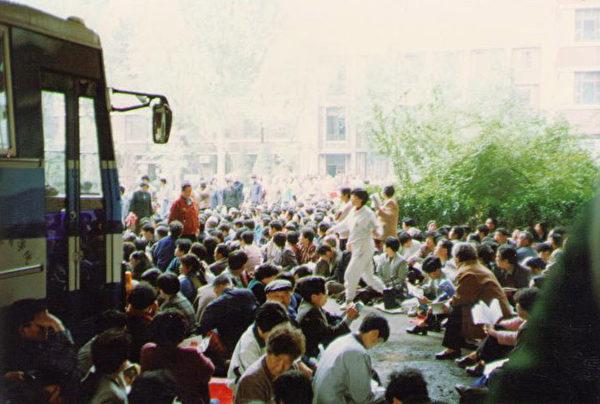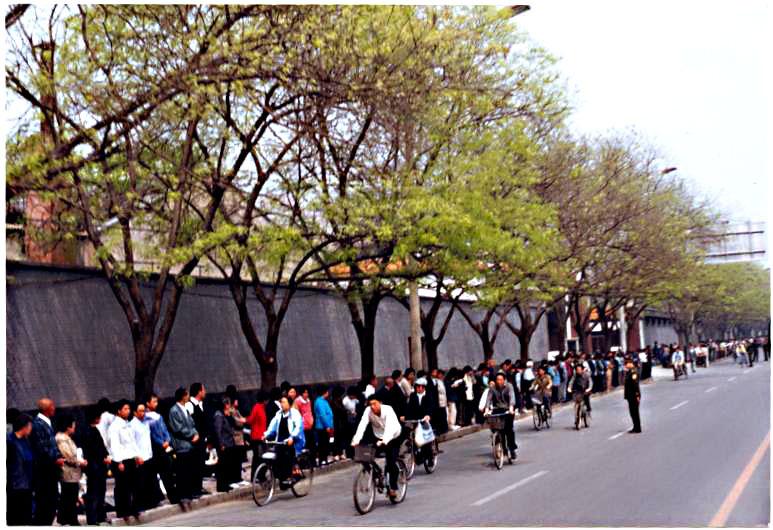The Peaceful Call for Freedom made 25 Years Ago Resonates Today
About 10,000 people quietly congregated in Beijing on a spring day in 1999, now remembered as the April 25 appeal—the largest protest in China’s recent history.
A senior official drove by. Then the anti-riot police turned up. They rained down punches and kicks, and threw dozens of people into vans. One gray-haired woman fainted as the police dragged her away, her back scraping the ground.
City officials told the rest of the dazed crowd in Tianjin, a megacity in eastern China, they would need to go to Beijing to appeal if they wanted the prisoners released.
So they did—although the Tiananmen massacre a decade earlier still scarred them.
Ultimately, 10,000 people congregated quietly in Beijing on a day in 1999, now remembered as the April 25 appeal—the largest protest in communist China’s recent history.
Despite 25 years going by, those who were there that day say their issue is as relevant now as it was then.
Wang Huijuan, then a 28-year-old local elementary school teacher in Tianjin, clutched her husband’s arm tight as she watched the police make arrests in front of her. But it didn’t take long for her to make up her mind. That April 25 morning, she cried as she hugged her 5-year-old daughter goodbye before hopping into a cab to Beijing, 80 miles away.
“I thought at the time that no matter what would happen to me, I had to step forward, to tell my thoughts to the [authorities],” Ms. Wang, now in New York, told The Epoch Times. “If I don’t come back, so be it.”
In 1999, Falun Gong, the meditation she practiced, was popular in China. Around 70 million to 100 million Chinese people embraced the idea of living their lives based on the principles of truthfulness, compassion, and tolerance. Ms. Wang credits the practice for restoring her health and filling her life with “sunshine and hope.”
But the environment was changing.
Plainclothes police officers monitored Ms. Wang and others in a public park when they gathered to do the Falun Gong exercises. A state-run magazine published an article slandering the practice. When a group of practitioners asked for a retraction, Tianjin’s public security bureau dispatched riot police to beat them up and arrested 45.
As word of the police brutality began to spread, Falun Gong adherents around the country decided to travel to Zhongnanhai, the compound for the top Chinese Communist Party (CCP) leadership to ask for the release of the Tianjin detainees and for the freedom to practice their beliefs.

‘Beijing Welcomes You’
Around daybreak, Ouyang Yan, then a 48-year-old administrative worker at the Communication University of China in Beijing, began biking toward Zhongnanhai. She was among the first to arrive. Few people were on the streets, but police cars were parked all around.
“We were thinking, did we come too early?” Ms. Ouyang, who now lives in Seattle, told The Epoch Times. “How come there wasn’t anyone?”

Within about half an hour though, more Falun Gong practitioners joined. Some arrived in the afternoon because they had flown in. There were people in their 80’s and a two-week-old newborn brought by their mother.
“I never saw so many people together, even on TV,” said Ms. Wang.
For an unorganized gathering, the practitioners were surprisingly orderly.
They lined up along the pedestrian paths, some walked around to pick up litter. It was peaceful enough that the police, once tense, gradually relaxed, sitting on street curbs and chatting among each other, according to Ms. Wang. Ms. Ouyang’s daughter stood studying for an upcoming exam.
At one point, Ms. Ouyang heard that some CCP officials from Zhongnanhai were asking to meet with representatives of the protest. She said she nearly volunteered herself, even though she wasn’t a great speaker.
“That day, I was so confident in myself that I would be able to explain to anyone how great the Falun Gong practice is.”

In the late afternoon, bikers in sleeveless shirts waved to them.
“Beijing welcomes you, hope you come again,” Ms. Wang recalled them saying.
…
For the full article please visit: https://www.theepochtimes.com/falun-gong-followers-25-years-after-the-largest-protest-in-communist-chinas-recent-history_5637876.html
Source link





